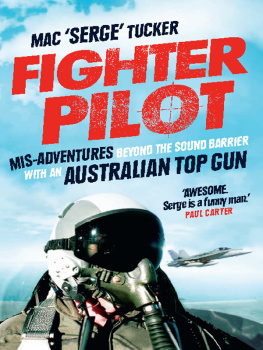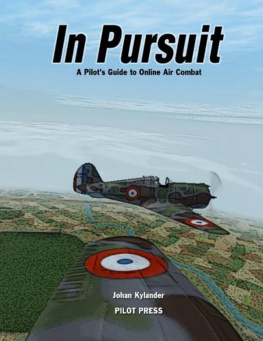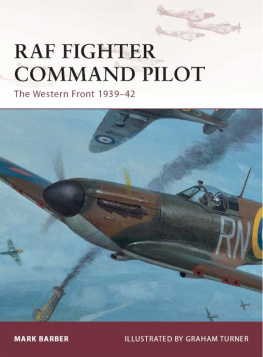
This publication is designed to provide accurate and authoritative information in regard to the subject matter covered. It is sold with the understanding that the publisher and author are not engaged in rendering legal, accounting, or other professional services. Nothing herein shall create an attorney-client relationship, and nothing herein shall constitute legal advice or a solicitation to offer legal advice. If legal advice or other expert assistance is required, the services of a competent professional should be sought.
Published by River Grove Books
Austin, TX
www.rivergrovebooks.com
Copyright 2019 Brad Conners
All rights reserved.
For permission to reprint prayer by CDR John J. Bug Roach, III, grateful acknowledgment is made to The Tailhook Association. Tailhook.net.
Thank you for purchasing an authorized edition of this book and for complying with copyright law. No part of this book may be reproduced, stored in a retrieval system, or transmitted by any means, electronic, mechanical, photocopying, recording, or otherwise, without written permission from the copyright holder.
Distributed by River Grove Books
Design and composition by Greenleaf Book Group and Kim Lance
Cover design by Greenleaf Book Group and Kim Lance
Publishers Cataloging-in-Publication data is available.
Print ISBN: 978-1-63299-229-1
eBook ISBN: 978-1-63299-230-7
First Edition
This book is dedicated to my familyTerrie, Sarah, Rachel, Anna, and Bradford; to the men and women of the VFA-151 Vigilantes; and to the men and women of Naval Base Ventura County.
Every night, our kids knew that mistakes were in the past, opportunity was in the future, and that their parents, brothers, and sisters were the best wingmen they would ever have.
Prayer written by
Commander John J.Bug Roach, III, USN 19441991
LORD, WE ARE THE NATION! We celebrate our birthday on July 4th, 1776, with the Declaration of Independence as our birth certificate. The bloodlines of the world run in our veins, because we offer freedom and liberty to all whom are oppressed. We are many things and many people. We are the nation.
We sprawl from the Atlantic to the Pacific, to Alaska and Hawaii. Three million square miles throbbing with industry and with life. We are the forest, field, mountain, and desert. We are the wheat fields of Kansas, the granite hills of Vermont, and the snowcapped peaks of the Sierra Nevada. We are the Brooklyn Bridge, we are the grain elevators in the Farm Belt. We are the Golden Gate. We are the nation.
We are 213 million living souls, and yet we are the ghosts of millions who have lived and died for us. We are Nathan Hale and Paul Revere. We are Washington, Jefferson, and Patrick Henry. We are Lee, Grant, Abe Lincoln, and George Bush. We are the famous and the unknown. We are presidents, we are paupers. We are the nation.
We stood at Lexington and fired the shot heard around the world. We remember the Alamo, the Maine, Pearl Harbor, Inchon, and the Persian Gulf. When freedom calls, we answer. We left our heroic dead at Belleau Wood, on the rock of Corregidor, on the bleak slopes of Korea, in the steaming jungles of Vietnam, and under the rubble of Beirut. We are the nation.
We are schools and colleges, churches and synagogues. We are a ballot dropped in a box, the harmonious voice of a choir in a cathedral, the crack of a bat, and the roar of a crowd in a stadium. We are craftsmen, teachers, businessmen, and judges. We are laborers and nurses. We are parents and we are children. We are soldiers, sailors, and airmen. We are peaceful villages, small towns, and cities that never sleep. Yes, we are the nation, and these are the things that we are.
We were conceived in freedom, and dear God, if you are willing, in freedom we will spend the rest of our days. May we always be thankful for the blessings you have bestowed upon us. May we be humble to the less fortunate and assist those in need. May we never forget the continuing cost of freedom. May we always remember that if we are to remain the land of the free, we must continue always to be the home of the brave. May our wishbone never be found where our backbone should be. May we possess always, the integrity, the courage, and the strength to keep ourselves unshackled, to remain always a citadel of freedom and a beacon of hope to the world.
We are the nation.
This is our wish.
This is our hope.
And this is our prayer.
Amen
CONTENTS
PREFACE
AIRCRAFT CARRIER: A DAY IN THE LIFE
I t is said that a US Navy fighter aircraft is airborne somewhere in the world every second of every day, promoting peace and prosperity, protecting national and global interests, and if necessary, projecting power or rendering disaster relief.
In order to accomplish this amazing feat, the United States deploys eleven special ships, called aircraft carriers, strategically around the globe. They are a marvel in engineering; they are a marvel in self-sufficiency; and they are a marvel in conducting aircraft operations. When a global crisis of any type strikes, the first question that often gets asked is: Where are the carriers?
If you have ever stood or floated next to one, you know how intimidating they are. They are mammoth. At over 1,100 feet long, it is just 150 feet short of the Empire State Building. A football or soccer game could be played across its width, and it stands twenty stories high above the waterline. The United States carriers are surprisingly fast thanks to two nuclear reactors spinning four gigantic thirty-ton propellers, and are also fairly maneuverable despite their size. And other than for food, aviation fuel, and weapons, they are mostly self-sufficient.
Of course, this 100,000-ton marvel gets much smaller the moment you try to take off and land from it. For takeoff (or launch), an aircrafts front wheel strut is connected to one of the ships four catapults. Then, in the span of 300 feet and two seconds, the catapult accelerates a high-performance jet to 150 miles per hour, and poofyoure flying. Disneys California Screamin roller coaster, now the Incredicoaster, is about as close to the real experience as you can find. To land, that same aircraft uses a hook lowered from its back end to snatch one of the four cables stretched across a 75-foot-wide, 766-foot-long landing area. Most runways you are probably used to landing on are 10,000 feet long and 200 feet wide. The cable unwinds at such a precise rate that it can bring a 35,000-pound jet going 160 miles per hour to a complete stop in less than three secondswithout ripping the hook out of the airplane! Other than slamming on your cars brakes in an emergency at a terrifically high speed, its tough to find an equivalent experience in normal life. And when day gives way to night or clear skies turn dark and cloudy, the ship begins to shrink in relative size for any pilot trying to land on what now looks like a floating harmonica.
So how do fighter pilots get the ship back to manageable size for landing? There is a secret something that is often overlooked by those who tend to only marvel at its technical might and jaw-dropping size. This singular, extraordinary secret provides the decisive advantage for a pilot in every situation, every undertaking, and every mission. There is only one thing that can restore the ship back to a manageable size to make it possible for the pilot to land. What is this secret something? It is the carriers crewits family, if you will.
Each member of this 5,000-person family acts in synchronous harmony. The captain and commanders set the course, prepare and integrate their teams, and make extremely difficult risk decisions. Every other member of this special family has a unique role and function. They work in a perpetual cycle of survival. If they are not learning, they are teaching or doing. And if they are not being led, they are leading. This time-honored system accelerates the progression and mastery of the crucial skills they must acquire for the carrier to operate at the highest of standards. On the carrier flight deck, teams are distinguished by the color of the jersey, helmet, or floatation vest they wear: red, white, green, blue, purple, or yellow. Ordnance teams (in red) are building, moving, testing, and loading weapons. White clothing signifies a safety team who tend to be the risk referees and supervisors who are integrated into both routine (launch and recovery) and special evolutions (like aircraft emergencies). Maintenance personnel wear green. The newest and most vulnerable family members wear blue, so the rest of the team can keep an eye on them as they learn how to survive on the most dangerous four-and-a-half acres of real estate known to aviation. Fuelers wear purple, and those who direct, move, launch, and recover aircraft wear yellow. This entire team brings the ship to life, gives it personality and character, and allows the extraordinary to appear routine and ordinary.
Next page











